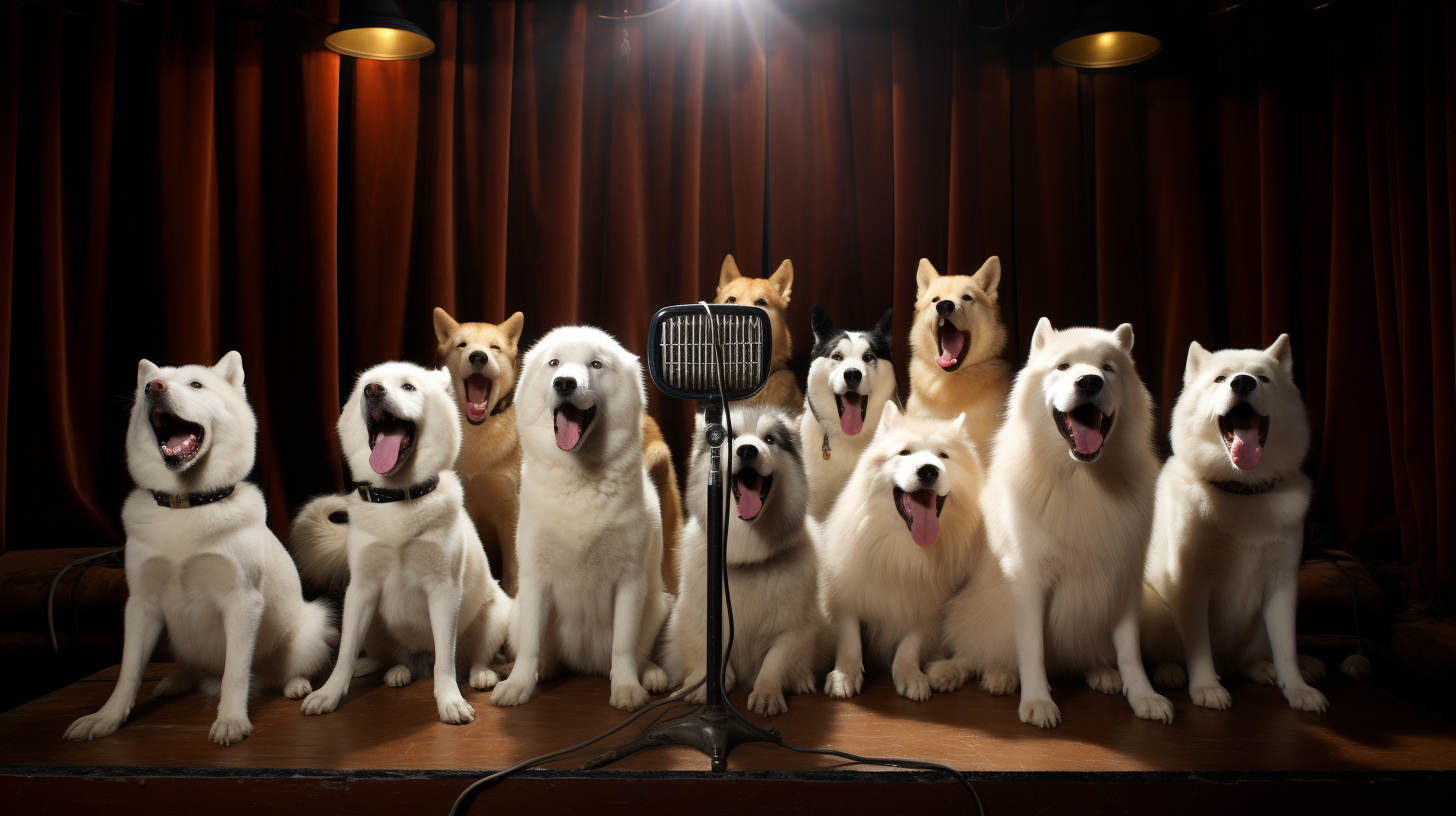In a world where wagging tails keep the beat, and howls reach for high notes, the Canine Republic continues to surprise us with ever-evolving melodies. After the resounding success of music therapy and the rise of vocal coaching, the latest cultural crescendo comes in the form of dog choirs, sweeping the nation with harmony and unity.
Move over, bark bars and tail-tap dance halls—there’s a new sound taking over the parks and plazas. Dog choirs are creating waves that have tails thumping in rhythm, and ears perking up in interest. But what is it about choral music that has our four-legged friends so enthralled, and what could this mean for the future of canine artistic expression?
The sensation began when noted canine conductor, Maestro Howlstein, decided to merge individual talents into a collective howl. His al fresco performances have become the stuff of legend, harmonizing voices from the bassy growl of the big Mastiffs to the sopranic bugs of the tiny Chihuahuas. These choirs are more than entertainment; they embody camaraderie and display an elegant blend of natural canine instincts with the cultivated art of music.
One can’t help but be swept into the enthusiasm as the choirs perform what Maestro Howlstein calls ‘Symphonies of the Snout,’ where each dog’s unique vocal tone plays a pivotal role. This isn’t just melodious merriment; it’s an expression of canine culture. When we sing together, we connect on a primal level. It’s about unity, about finding our place in the pack through the music we make together,
Howlstein remarks.
The trend is not occurring in a vacuum. It builds upon the prevalent use of music therapy and the personalized vocal training highlighted by Bella the beagle’s pitch-perfect crescendos. With the ‘Pooch Melody Maker’ app, even the most novice of hound harmonizers can contribute their voice to a growing digital symphony, allowing choirs to include remote members from distant dens.
But it’s not just about the music. Dog choirs also promote inclusivity within canine society. At a recent gathering, the Border Collie Quartet shared the stage with a group of local cat choirs, offering a pawsome example of interspecies harmony. These ventures extend beyond individual canine wellness to foster community spirit in the most melodious of ways.
This tuneful trend has its skeptics, though. Some old-timers snarl at the very thought, believing that organized choirs diminish the spirited spontaneity of a natural dog howl. However, proponents argue that these choirs are simply a new way for dogs to express themselves. As Max the mutt put it, We’re not losing our roots; we’re finding a new way to dig them.
Dog fashion has also caught the choral wave, with the first line of choir-friendly canine cloaks being a runaway hit. These fashion pieces not only look sharp but are designed with acoustics in mind, helping to amplify and clarify each dog’s part in the choir.
Several kennel clubs and community centers have begun offering ‘choir camps’ where dogs can hone their skills, learn to harmonize, and understand their voices. The camps culminate in grand performances that are as much about personal growth as they are about musical achievement.
Going forward, the United Dogdom’s Barkliament even hinted at incorporating choir programs into the national education curriculum, stating that harmony in voice fosters harmony in community.
This level of institutional backing is unprecedented and could pave the way for a grand canine choral tradition.
From a whisper of a whimper to the boom of a bark, these choirs are teaching the Canine Republic that when it comes to communication, the medium can be just as important as the message. As the sun sets on another bustling day, the choirs gather, and an amalgam of ancestral howls and trained tones rise to the stars, a beautiful reminder that in every dog lies the heart of a song.
